ABSTRACT
Gender-fair language makes women and people of other genders, their interests, and achievements more visible. However, critics argue that gender-fair language impairs the comprehensibility and aesthetic appeal of texts. This study tests these assumptions specifically concerning the gender asterisk, a form of gender-fair language that makes people outside the male-female dichotomy typographically more visible in German. In two experiments with N = 133 and N = 110, subjects were randomly given one of three versions of a text, either with masculine-only forms (e.g. die Spieler*innen, ~“the fe*male players”), the gender asterisk in its plural form (e.g. die Spieler*innen, “the fe*male players”), or the gender asterisk in its singular form (e.g. der*die Spieler*in, “the*the fe*male player”). Subsequently, participants completed a comprehensibility questionnaire. Both experiments show that the gender asterisk in its singular form impairs comprehensibility, but only Experiment 1 shows an impairment due to its plural form.
Introduction
Gender-fair language aims to increase visibility for women and members of other genders, along with their achievements and interests. Newer forms of gender-fair language, such as the gender asterisk, are intended to make people outside the male-female dichotomy typographically visible. According to critics, the use of gender-fair language impairs the comprehensibility and aesthetic appeal of texts (e.g., Payr, Citation2022a, Citation2022b). This study tests critics’ assumptions about the gender asterisk by examining students, as they often act as multipliers in their later professions, that is, people who pass on their knowledge, beliefs, and attitudes to others as (linguistic) role models, teachers, and decision-makers, thus contributing to its dissemination.
In this paper, we outline gender representation in language, different forms of gender-fair language, the effects of masculine-only language and gender-fair forms on mental representations and behavior, research on comprehensibility, and the current understanding of the possible influences of gender-fair language on comprehensibility and aesthetic appeal. Finally, six hypotheses are presented, which are tested across two experiments, and are subsequently discussed.
Representation of gender within languages
Gygax et al. (Citation2019) classified languages into five categories based on their representation of gender. presents an overview of these categories.
Table 1. Overview of the five categories regarding the representation of gender in languages according to Gygax et al. (Citation2019).
In grammatical gender languages, feminine forms are often derived from masculine forms. In German, for example, the feminine form is often formed by adding the suffix “-in” in the singular (e.g., der Spieler und die Spielerin, “the player (male) and the player (female)”) or the suffix “-innen” in the plural (e.g., die Spieler und die Spielerinnen, “the players (male) and the players (female)”). In many languages, the masculine form is commonly used to represent all genders, or when gender is irrelevant to the actual statement (Stahlberg et al., Citation2007). This practice is sometimes called “generic masculine,” although the masculine form is grammatically identical regardless of whether it encompasses only males or all genders (Diewald & Steinhauer, Citation2020). The practice of using masculine forms to represent all genders has faced criticism for establishing masculinity as the standard and rendering women’s and other genders’ interests and achievements less visible (Saul & Diaz-Leon, Citation2018). Conversely, gender-fair language refers to a language use that aims to represent all genders equally (Diewald & Steinhauer, Citation2020).
provides an overview of typical forms of gender-fair language used in German. Slash forms and capital-I forms are considered to be abbreviated pair forms, which have been criticized for neglecting those outside the male-female dichotomy. Neutral forms and nominalized participles include people of all genders. Gender gaps, colons, and asterisks are intended to include people of all genders and make people outside the male-female dichotomy typographically visible (Diewald & Steinhauer, Citation2020). The examples given in refer to plural forms. In German, the article for the plural is always die (“the”), whereas in the singular the article, it can be die (“the (female)”), der (“the (masculine)”), or das (“the (neutral)”). Consequently, the singular form of the gender asterisk presents a challenge as it is often unclear which article to use, sometimes resulting in the use of both feminine and masculine articles, e.g., der*die Spieler*in, ~“the*the fe*male player.” The gender asterisk is the most common form for typographically representing genders outside the male-female dichotomy (Krome, Citation2021). Despite its increasing use, there is a lack of research on its effects.
Table 2. Typical forms of gender-fair language in German (Diewald & Steinhauer, Citation2020).
Influence of the linguistic representation of gender on mental representations and behavior
A vast number of empirical studies support the assumptions regarding the effects of masculine-only forms on gender representation. Since masculine-only forms always refer to men but not necessarily women or members of other genders, one can assume that the associations between masculine-only forms and men are stronger than those between masculine-only forms and women or other genders (cf., Kintsch, Citation1998). This assumption is confirmed by numerous studies (the so-called “male bias”; see for example, Gabriel et al., Citation2008; Heise, Citation2000; Misersky et al., Citation2019; Sato, Gabriel et al., Citation2016; Sato, Gygax et al., Citation2016; for a review, see Braun et al., Citation2005). The strength of associations between masculine-only terms and men, women, or members of other genders also depends on factors beyond linguistic form, especially prior knowledge. For instance, Erzieherin (“educator (female)”) is a typically female profession in Germany. Therefore, the masculine-only form Erzieher tends to evoke predominantly female associations (Gabriel et al., Citation2008).
Numerous studies have shown that the use of gender-fair language facilitates mental representations in which men and women are represented in a more balanced way (e.g., Braun et al., Citation2005; Gabriel et al., Citation2008; Heise, Citation2000; Misersky et al., Citation2019; Sato, Gabriel et al., Citation2016; Sato, Gygax et al., Citation2016). Paired forms and newly introduced pronouns such as hen in Swedish or ze in English eliminate male bias (Lindqvist et al., Citation2019). The authors advocate for the use of newly introduced gender-neutral pronouns since they are the most inclusive. Overall, there is a lack of studies investigating the effects related to members of other genders. Studies regarding the gender asterisk have indicated that it leads to a slight female bias, that is, a slight mental overrepresentation of women (Körner et al., Citation2022), and the successful mental inclusion of members of other genders (Zacharski & Ferstl, Citation2023).
Self-categorization theory assumes that people primarily associate themselves with a group when the corresponding category is salient within a given situation (Turner et al., Citation1987). When masculine language forms are used, it always suggests an intended reference to males. However, in many cases, there is uncertainty as to whether women and members of other genders are also included. Grounded in self-categorization theory, Gabriel and Gygax (Citation2016) argued that heightened linguistic emphasis on gender within communicative channels amplifies attention toward gender stereotypical thoughts and behavior. Indeed, languages with grammatical gender exhibit more gender biases compared to genderless languages, even when controlling for plausible covariates such as geographic, cultural, and sociodemographic variables, such as the Human Development Index or the Religious Diversity Index (DeFranza et al., Citation2020). The degree of gender representation within a language correlates with the size of the gender wage gap and the share of men in domestic work, even after controlling for plausible covariates, such as religious traditions or governmental systems (Prewitt-Freilino et al., Citation2012). In addition to these correlative relationships, numerous experiments have highlighted the impact of the linguistic representation of gender on attitudes and behaviors. Masculine forms and stereotypically masculine role nouns tend to be processed faster in the agentic role than feminine forms and stereotypically feminine role nouns. Conversely, feminine forms and stereotypically feminine role nouns are typically processed faster in the patientic role than masculine forms or stereotypically masculine role nouns (Esaulova & von Stockhausen, Citation2015).
Using gender-fair language rather than masculine-only forms has several desirable effects: women are viewed as more suitable for typically masculine jobs and are considered more likely to achieve success (Horvath & Sczesny, Citation2015; Vervecken et al., Citation2015, Citation2013); women show more commitment, interest, and self-efficacy in traditionally male jobs (e.g., Bem & Bem, Citation1973; Stout & Dasgupta, Citation2011; Vervecken & Hannover, Citation2015), and perform better in mathematics when addressed with gender-fair language as opposed to masculine-only forms (Kricheli-Katz & Regev, Citation2021).
Partly as a result of studies examining the effects of masculine-only forms and gender-fair language, there is currently an intense and often emotional debate on the use of gender-fair language in Western societies. Arguments against the use of gender-fair language have been collected by Blaubergs (Citation1980) and Vergoossen, Renström et al. (Citation2020), among others. A common argument against the use of gender-fair language is that it may decrease text comprehensibility (e.g., Payr, Citation2022a, Citation2022b). This raises the question of what constitutes comprehensibility.
Comprehensibility
The term “comprehension” refers to both a product and a process. The product is achieved when readers have built an appropriate mental representation of an object. The process of comprehension refers to the construction of this product (Kintsch, Citation1998). In addition, “comprehensibility” is defined as the ease with which readers can perform the process of comprehension (Friedrich, Citation2017). Comprehensibility (or readability) has been studied since the 1920s. Two distinct approaches can be distinguished: the dominant approach treats comprehensibility as an inherent feature of texts. This line of research has shown that texts are more comprehensible when they use short or common words, employ short and syntactically simple sentences, and maintain a high degree of cohesion between successive sentences and the overall text content (Collins-Thompson, Citation2014; Crossley et al., Citation2008; McNamara et al., Citation2014). This approach thereby addresses what has also been called “text complexity,” which is a well-known predictor of reading times (Haberlandt & Graesser, Citation1985) and readers’ actual comprehension (Friedrich & Heise, Citation2022).
However, how easy it is for readers to comprehend a certain text depends not only on the characteristics of the text, but also on the characteristics of the readers, including their vocabulary, prior knowledge, size of working memory, reading competence, reading motivation, and possibly also their familiarity with the linguistic structures of the text (Friedrich, Citation2017; cf., Cromley & Azevedo, Citation2007). For instance, a text may be incomprehensible to first-year students but become comprehensible after graduation. The text has not changed, but their knowledge has likely increased. The approach equating comprehensibility with text complexity has been rejected by Kintsch and van Dijk (Citation1978, p. 372), among others, who argued that “readability cannot be considered a property of texts alone, but one of the text-reader interaction.” According to this perspective, text comprehensibility is not an inherent feature of texts, but of the interaction between a certain text and a certain reader (Friedrich, Citation2017). Comprehensibility is defined as the ease with which readers can perform the processes necessary to construct an adequate and coherent representation of the text and its communicative functions. According to this view, it is necessary to assess the ease with which readers comprehend a given text. German concepts of comprehensibility, in particular, additionally consider the aesthetic appeal of texts as a feature of comprehensibility, even for expository texts, assuming that aesthetically appealing texts are more motivating for readers and thus increase the ease with which the texts can be processed (Friedrich, Citation2017; Langer et al., Citation1974).
Based on prior studies, Reber and Greifeneder (Citation2017) argued that objective measures at different levels of cognitive processing, such as eye movements and reading times, contribute independently to processing fluency and are necessary to capture processing fluency comprehensively. However, the ease with which stimuli can be processed can be effectively assessed through self-reports, such as questionnaires (Reber & Greifeneder, Citation2017). For example, Friedrich (Citation2017) constructed a questionnaire that reliably and validly measures seven characteristics of comprehensibility for university students and students from the sixth grade onward. These include: effort required for readers to assign meaning to words in a text (word difficulty), effort required for readers to decode the syntax of sentences in a text (sentence difficulty), effort required for readers to correct misconceptions about the content or further progression of the text (effort for reorganizations), the number of concepts presented in the text relative to its length (argument density), the ease with which readers can build an adequate mental model of the text’s content (clarity of representations), how lively readers consider the text (variation of language use/aesthetic appeal), and the overall ease with which readers understand the text (subjective comprehensibility). Critics argue that gender-fair language has unfavorable effects on overall comprehensibility, word difficulty, sentence difficulty, and aesthetic appeal, but not on other characteristics of comprehensibility. For example, Payr (Citation2022b) argued that the gender asterisk and other forms of gender-fair language could impair the comprehensibility and aesthetic appeal of texts, and gave the following example of a game instruction that he gendered himself: “Die anderen Spieler*innen versuchen nun zu erraten, welche der ausgelegten Bildkarten dem/der Erzähler*in gehört. Jede/r Spieler*in (außer dem/der Erzähler*in) legt verdeckt eines seiner/ihrer Abstimmungsplättchen vor sich.” “~The other fe*male players now try to guess which of the cards belongs to the/the fe*male narrator. Each/each fe*male player (except the/the fe*male narrator) places one of his/her voting cards face down in front of him/her.” (Payr, Citation2022b, S. 118 f).
Studies on the possible influence of gender-fair language on comprehensibility
Writing in gender-fair language currently requires the use of longer or less common words and longer sentences with more complex syntax. For example, the sentence Der jüngste Spieler beginnt (“The youngest player begins”) uses the common and relatively short nominal phrase der jüngste Spieler (“the youngest player”). A possible alternative phrasing of the sentence using the gender asterisk is Der*die jüngste Spieler*in beginnt (~“The*the youngest fe*male player begins”). The phrase “Der*die jüngste Spieler*in” (~’The*the youngest fe*male player’) is longer and less common than the corresponding masculine-only form. The use of the gender asterisk also lengthens the sentence. Since in German the article der (“the (masculine)”) or die (“the (feminine)”) is dependent on the noun and must be adapted to the gender, the syntax also becomes more complicated. Therefore, the use of gender asterisks increases text complexity.
Readers can more easily assign meaning to short and common words and more easily decode the syntax of short sentences as well as sentences with simple and common syntax (Crossley et al., Citation2008; McNamara et al., Citation2014). Therefore, it is reasonable to assume that texts with masculine-only forms are easier to comprehend than texts that use the gender asterisk as a form of gender-fair language. As familiar or easy-to-process stimuli are evaluated more positively than stimuli that are more difficult to process (Reber & Greifeneder, Citation2017), it is also reasonable to assume that texts with the gender asterisk are evaluated as aesthetically less appealing than texts with masculine-only forms.
Those with positive attitudes toward gender-fair language use it more often and are, therefore, more familiar with it (Sczesny et al., Citation2015). Furthermore, it can be assumed that gender-fair forms are easier to process for individuals who are more familiar with them (Friedrich, Citation2017; Reber & Greifeneder, Citation2017).
Several experiments have examined the influence of different forms of gender-fair language on comprehensibility, most of which have utilized questionnaires and eye movement analysis (for a review, see Friedrich & Heise, Citation2019; ). These studies have shown no impairment of comprehensibility by pair forms (Blake & Klimmt, Citation2010; Braun et al., Citation2007; Friedrich & Heise, Citation2019; Rothmund & Christmann, Citation2002), neutral forms (Pöschko & Prieler, Citation2018; Rothmund & Christmann, Citation2002; Steiger-Loerbroks & von Stockhausen, Citation2014), capital-I forms (Blake & Klimmt, Citation2010; Braun et al., Citation2007), the glottal plosive (a form of gender-fair spoken language, which inserts a toneless consonant in place of the gender asterisk, the gender colon or the gender gap; Friedrich, Muselick, & Heise, Citation2022), or the gender-neutral pronoun hen in Swedish (Vergoossen, Pärnamets et al., Citation2020). Experiments have indicated that slash forms impair comprehensibility (Klimmt et al., Citation2008; Pöschko & Prieler, Citation2018). Although the effects were not always statistically significant, the studies also indicated a weak impairment in the aesthetic appeal of texts due to gender-fair language (Friedrich & Heise, Citation2019; Klimmt et al., Citation2008; Rothmund & Christmann, Citation2002). With the exception of Vergoossen, Pärnamets et al.’s (Citation2020) study, all the studies we are aware of were conducted in German and involved adults. Moreover, most studies seem to have examined only the simpler plural forms of gender-fair language and not the more complex singular forms.
Although the gender asterisk is the most common form of gender-fair language intended to make people outside the male-female dichotomy typographically visible (Krome, Citation2021), only two experiments are available on its effect on comprehensibility. The first experiment by Friedrich et al. (Citation2021) showed no impairment of comprehensibility due to the gender asterisk in its plural form, while their second experiment showed an impairment of comprehensibility due to the gender asterisk in its singular form. Friedrich, Hagenberg, & Heise (Citation2022) replicated the effect of the gender asterisk in its singular form on comprehensibility. Since their experiments used texts on different topics, it is not entirely clear whether these differing results were caused by different grammatical numbers or other characteristics of the texts.
Research has shown different effects for the various forms of gender-fair language. Newer forms of gender-fair language, therefore, need to be reexamined for their effects. Thus far, there has been a lack of research on the effects of gender-fair forms that aim to make nonbinary genders explicitly visible. The gender asterisk is the most prominent of these forms (Krome, Citation2021). Therefore, this study further investigates this question.
Hypotheses
The present study addressed the question of how the gender asterisk, in both its singular and plural forms, compared to masculine-only forms affects comprehension, time on task, and the most relevant comprehensibility features, namely subjective comprehensibility, word difficulty, sentence difficulty, and the aesthetic appeal of the texts. The gender asterisk leads to the use of longer and less common words and longer sentences with more complicated syntax. Therefore, it is reasonable to assume that texts with the gender asterisk make it more difficult to assign meaning to words and decode syntax. Stimuli that are easier to process are also evaluated more positively (Reber & Greifeneder, Citation2017). Finally, reading times are longer and texts are less well comprehended when the texts are more complex (Friedrich & Heise, Citation2022; Haberlandt & Graesser, Citation1985). Therefore, it is reasonable to assume that texts with the gender asterisk lead to longer task times and poorer comprehension. This leads to the following hypotheses:
1. Texts using masculine-only forms are more comprehensible than texts using the gender asterisk (Hcomprehensibiliy);
2. It is easier for readers to assign meaning to the words of a text using masculine-only forms than to a text using the gender asterisk (Hword_difficulty);
3. It is easier for readers to decode the syntax of sentences in a text using masculine-only forms rather than using the gender asterisk (Hsentence_difficulty);
4. Texts that use masculine-only forms are more aesthetically appealing than those that use the gender asterisk (Haesthetic_appeal);
5. Readers comprehend texts that use masculine-only forms better than texts that use the gender asterisk (Hcomprehension); and
6. Readers spend more time on task on texts that use the gender asterisk than on those that use masculine-only forms (Htime_on_task).
This study examines the implementation of gender-fair language as discussed by critics (cf., Payr, Citation2022b).
Critics of gender-fair language argue that the gender asterisk impairs comprehensibility in both its singular and plural forms. However, the gender asterisk requires longer sentences with more complex syntax in its singular form compared to its plural form (e.g., der*die Spieler*in, “the*the fe*male player” vs die Spieler*innen, “the fe*male players”). In Friedrich et al.’s (Citation2021) study, the gender asterisk significantly impaired comprehensibility in its singular form but not in its plural form. Therefore, the hypotheses were tested for the gender asterisk in its singular and plural forms. Attitudes toward gender-fair language were assessed as possible covariates in Experiment 1. Age, gender, and level of education are well-known predictors of reading competence (Rammstedt, Citation2013) and were therefore included as possible covariates in both experiments.
Experiment 1
Experiment 1 tested hypotheses Hcomprehensibility, Hword_difficulty, Hsentence_difficulty, Haesthetic_appeal, and Htime_on_task for the gender asterisk, both in its plural and singular forms. This study was approved by the ethics committee of Faculty 2 of the TU Braunschweig (ID number BA_2022-08) and was conducted in German at a German university. The materials, scale manuals, data sets, and syntaxes used in this experiment are available at https://doi.org/10.17605/OSF.IO/PYKVX
Participants
The study was promoted as a study on comprehensibility in a lecture for students of psychology, teaching, and education, as well as through various mailing lists, notably a mailing list for psychology students. Psychology students were eligible to receive credit for their participation, while all others were eligible to participate through a draw for vouchers of €20 each. A total of 133 individuals aged between 18 and 80 years participated (M = 27.03; SD = 12.13; 113 females, 19 males, and one without gender indication). Ninety-five percent of the participants held at least a Fachabitur (specialized high school diploma) and 96% reported speaking German (approximately) at a native level. The remaining six participants possessed a mittlere Reife (a secondary school-leaving certificate).
Materials
A text on first aid authored by one of the researchers served as the reference text. The text is 738 words long and exclusively uses masculine-only forms (sample sentence: Angenommen, ein Besucher entdeckt auf einem vollen Rummel eine Person, die gestreckt mit geschlossenen Augen auf dem Boden liegt, “Suppose a visitor to a crowded carnival discovers a person lying stretched out on the ground with his eyes closed’). Henceforth, this text version will be referred to as the “text with masculine-only forms” (MOF). To produce a gender-fair version of this primarily using singular forms, all masculine-only forms were systematically replaced by forms with gender asterisks, and where possible, the singular form was used (e.g., der*die Patient*in, “the*the fe*male patient”). This version comprised 749 words and 65 phrases with the gender asterisk in its singular form and two phrases in its plural form (sample sentence: Angenommen, ein*e Besucher*in entdeckt auf einem vollen Rummel eine Person, die gestreckt mit geschlossenen Augen auf dem Boden liegt, “Suppose a*a fe*male visitor to a crowded carnival discovers a person lying stretched out on the ground with his*her eyes closed”). This text version will be referred to as the “text with the gender asterisk in its singular form” (GAS). To produce a gender-fair version of this text predominantly employing plural forms, all masculine-only forms of the text were systematically replaced by forms with gender asterisks, and, where possible, the plural form was used (e.g., die Patient*innen, “the fe*male patients”). This version comprised 739 words and two phrases with the gender asterisk in its singular form, and 39 phrases in its plural form (sample sentence: Angenommen, Besucher*innen entdecken auf einem vollen Rummel eine Person, die gestreckt mit geschlossenen Augen auf dem Boden liegt, “Suppose fe*male visitors to a crowded carnival discover a person lying stretched out on the ground with his*her eyes closed”). This text version will be referred to as “text with the gender asterisk in its plural form” (GAP).
Instruments
The instruments used in the experiments in this study are listed below. The number of items, internal consistency from the cited source, and a sample item are provided in parentheses. Time on task was assessed by asking the subjects to state the current time before and after reading. Comprehensibility was assessed using Friedrich’s (Citation2017) scale subjective comprehensibility (three items, sample item: Ich fand den Text verständlich, “I think the text was comprehensible”; α = .84 – .92 in five different experiments). The ease with which readers could assign meaning to words was assessed using the scale word difficulty (Friedrich, Citation2017; three items, sample item: Bei manchen Wörtern war ich mir nicht sicher, was sie bedeuten, “For some words, I was not sure what they meant”; α = .80 – .90 in five different experiments). The ease with which readers were able to decode the syntax of the sentences was assessed using the scale sentence difficulty (Friedrich, Citation2017; three items, sample item: Die Sätze waren kompliziert gebaut, “The sentences had a complicated structure”; α = .80 – .91 in five different experiments). The aesthetic appeal of the texts was assessed using the scale variation of language use (Friedrich, Citation2017; three items, sample item: Ich fand die Sprache lebhaft, “I found the language lively”; α = .65 – .89 in five different experiments). Attitudes toward gender-fair language were assessed as possible covariates using an adapted version of the “positive attitudes” scale by Sczesny et al. (Citation2015; four items; sample item: Geschlechtergerechte Sprache zu verwenden, ist mir persönlich wichtig, “It is personally important to me to use gender-fair language,”; α = .92). At the end of the questionnaire, four items addressed the participants’ self-perceived prior knowledge regarding the texts’ topic, age, gender, and level of education before participants were given the opportunity to comment on the texts and the study.
Procedure
The experiment was conducted as an online study using the Unipark software and followed a single-factor between-subjects design with the factor text and factor levels masculine-only forms (MOF), gender asterisk in its plural form (GAP), and gender asterisk in its singular form (GAS).
Participants received instructions and were then randomly assigned to read one of the three versions of the text. Subsequently, they completed the text comprehensibility questionnaire before being informed that they could not return to previous pages. They completed a scale on attitudes toward gender-fair language and questions on self-assessed prior knowledge, age, gender, and level of education. Finally, participants were given the opportunity to comment on the study.
Data analysis
For each hypothesis test, α was set to 5%. Hypotheses were tested using Kruskal–-Wallis H tests. If these tests yielded significant results, post -hoc comparisons were performed with the masculine-only forms condition serving as the reference group. Analyses were conducted using SPSS 28.0 as well as R 4.3.1 (R Core Team, Citation2021).
Results
presents the means, standard deviations, and internal consistencies for all conditions and dependent variables. Internal consistencies ranged from McDonald’s Ω = .76 to .89, indicating satisfactory to good reliability. presents the intercorrelations between the variables.
Table 3. Psychometric properties of the variables in both experiments.
Table 4. Intercorrelations of the variables in both experiments.
The differences between the three groups were statistically nonsignificant regarding age (F(2, 130) = 0.79, p = .46, η2 = .01), gender (Cramer’s V = .05, χ2 = 0.59, df = 2, p = .75), level of education (Kruskal–Wallis H = 0.97, df = 2, p = .61, η2 H = .00), self-assessed prior knowledge (Kruskal–Wallis H = 3.57, df = 2, p = .17, η2 H = .01), and attitudes toward gender-fair language (F(2, 129) = 3.05, p = .051, η2 = .05). Thus, randomization was considered successful.
shows the means and standard deviations of the dependent variables across different conditions. illustrate the corresponding box plots for the different text versions and dependent variables. shows the results of the Kruskal–Wallis H tests. Thus, hypotheses Hword_difficulty, Hsentence_difficulty, and Htime_on_task are not supported. Post hoc tests showed a statistically significant effect on subjective comprehensibility for the gender asterisk in its plural (z = 2.01, r = .20, p = .02) and singular forms (z = 4.29, r = .47, p < .001). Furthermore, post hoc tests showed a statistically significant effect on aesthetic appeal for the gender asterisk in its plural (z = 2.19, r = .22, p = .03) and singular forms (z = 2.46, r = .27, p = .01). Thus, hypotheses Hcomprehensibility and Haesthetic_appeal are supported by the gender asterisk both in its singular and plural forms.
Figure 1. Box plots for subjective comprehensibility by experimental condition in Experiment 1.
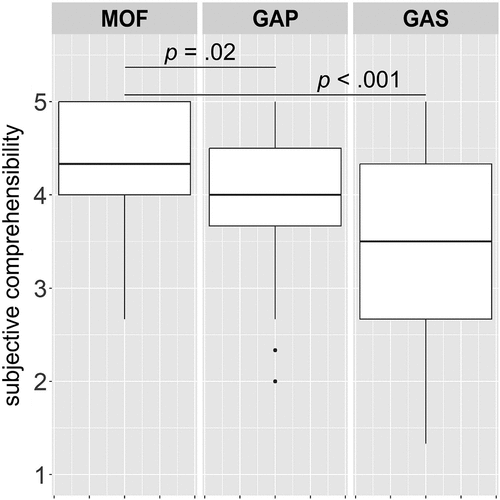
Figure 2. Box plots for word difficulty by experimental condition in Experiment 1.
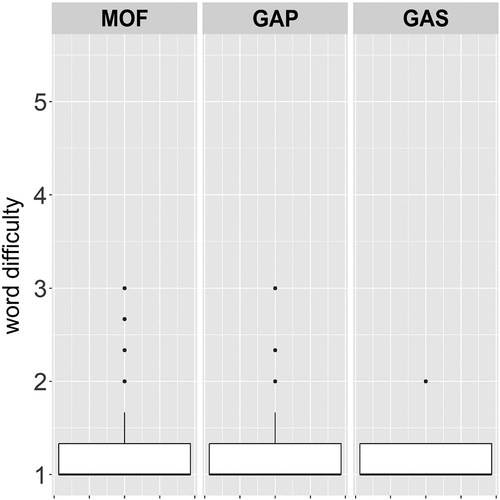
Figure 3. Box plots for sentence difficulty by experimental condition in Experiment 1.
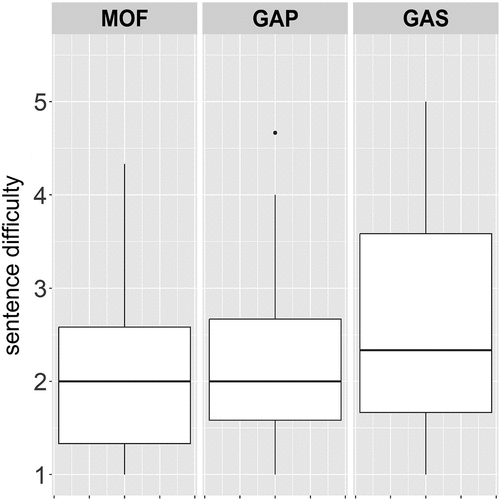
Figure 4. Box plots for aesthetic appeal by experimental condition in Experiment 1.
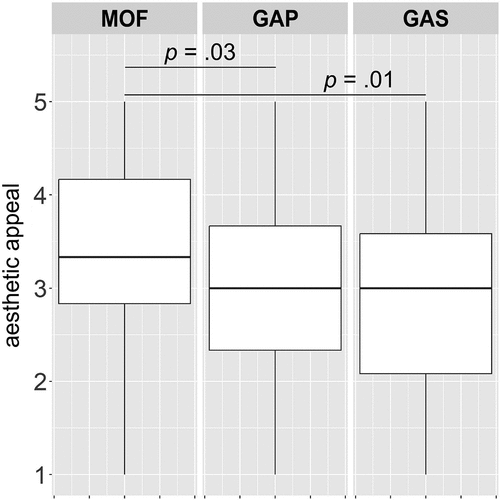
Figure 5. Box plots for time on task by experimental condition in Experiment 1.
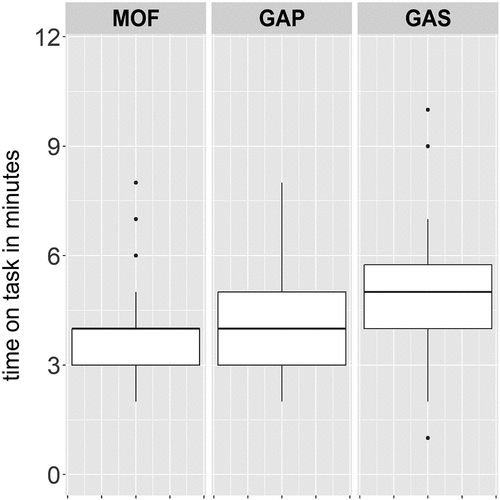
Table 5. Means and standard deviations for the different conditions in both experiments.
Table 6. Results of the Kruskal-Wallis-H-tests of the two experiments.
After excluding individuals without at least a Fachabitur (specialized high school diploma) or those who did not speak German at (near) the native level from the analyses, the difference between the condition with masculine-only forms and the version with the gender asterisk in its plural form regarding subjective comprehensibility and aesthetic appeal were no longer significant, possibly due to the lower statistical power.
Fifteen people responded to the open-ended questions at the end of the experiment and commented on the study or the text. Among them, two individuals in the condition with the gender asterisk in its plural form and four individuals in the condition with the gender asterisk in its singular form indicated that they found this type of gender-fair language distracting. Other individuals indicated that they found the study interesting.
Discussion
Overall, the gender asterisk impaired comprehensibility and aesthetic appeal in both singular and plural forms. However, there were no effects on the subjective perceptions of word difficulty, sentence difficulty, or time on task. The results regarding the plural gender asterisk contradict those of Friedrich et al. (Citation2021), where no impairment was observed. As for the singular gender asterisk, the results align with Friedrich et al. (Citation2021) concerning comprehensibility, word difficulty, and aesthetic appeal, but differ regarding sentence difficulty. Since this was the first experiment to compare the effect of the gender asterisk in its singular form to its plural form, these results were to be replicated in Experiment 2, which also examined the effect on comprehension.
Experiment 2
Experiment 2 was designed to replicate the results of Experiment 1 and also to test the effect of gender asterisks on comprehension (Hcomprehension). The study was approved by the ethics committee of Faculty 2 of the TU Braunschweig (ID number BA_2022-13) and was conducted at a German university in German. The materials, scale manuals, datasets, and syntaxes used in this study are available at https://doi.org/10.17605/OSF.IO/PYKVX
Participants
The study was promoted as a study on comprehensibility in a lecture for students of psychology, teaching, and education, as well as through various mailing lists, notably a mailing list for psychology students. Psychology students were eligible to receive credit for their participation, while others were eligible to participate by entering a draw for vouchers of €20 each. A total of 110 individuals aged between 18 and 82 years participated (M = 36.95; SD = 16.93; 62 females, 46 males, and two diverse genders). Eighty-eight percent of the participants held at least a Fachabitur (specialized high school diploma). Among the remaining individuals, one reported having a Hauptschulabschluss (lowest secondary school-leaving certificate in Germany), nine reported having a mittlere Reife (secondary school-leaving certificate), and three gave no indications.
Materials
To ensure comparability with Friedrich et al.’s (Citation2021) experiments, we utilized the same text employed in their second experiment focusing on the contact sport of Kabaddhi. The text comprised 458 words and exclusively used masculine-only forms (sample sentence: Jede Mannschaft schickt abwechselnd einen Angreifer – den sogenannten Raider – in die gegnerische Mannschaft, “Each team takes turns sending an attacker – called the raider – to the opposing team”). This text version will be referred to as the “text with masculine-only forms” (MOF). To produce a gender-fair version of this text predominantly using singular forms, all masculine-only forms were systematically replaced by forms with gender asterisks and, where possible, the singular form was used (e.g., der*die Angreifer*in, “the* fe*male attacker”). This text comprised 458 words and 51 singular and 18 plural forms using the gender asterisk (sample sentence: Jede Mannschaft schickt abwechselnd eine*n Angreifer*in – den*die sogenannte*n Raider*in – in die gegnerische Mannschaft, “Each team takes turns sending a*a fe*male attacker – called the*the fe*male raider – to the opposing team”). This text version will be referred to as the “text with the gender asterisk in its singular form” (GAS). To produce a gender-fair version of this text predominantly using plural forms, all masculine-only forms of the text were systematically replaced by forms with gender asterisks, and, where possible, the plural form was used (e.g., die Angreifer*innen, “the fe*male attackers”). This text comprised 456 words and six passages with the gender asterisk in its singular form and 34 passages with the gender asterisk in its plural form (sample sentence: Jede Mannschaft schickt abwechselnd Angreifer*innen – die sogenannten Raider*innen – in die gegnerische Mannschaft, “Each team takes turns sending fe*male attackers – the so-called fe*male raiders – into the opposing team”). This text version will be referred to as the “text with the gender asterisk in its plural form” (GAP).
Instruments
This experiment used the same instruments as Experiment 1, with the exception that attitudes toward gender-fair language were not assessed to minimize data collection. Time on task was measured by instructing participants to time themselves and report the duration it took them to read the text. In addition, comprehension was assessed using five ad hoc single-choice items. Each item presented a game situation along with four possible answers (one of which is correct), and the option “I don’t know” (sample item: Ein Raider berührt die Hand eines Gegners, verlässt auf dem Weg zurück in sein Feld aber das Spielfeld. Was passiert? (a) 1 Punkt für den Raider. (b) 2 Punkte für den Gegner. (c) Der Raider muss das Spielfeld verlassen. (d) Ein Verteidiger muss das Spielfeld verlassen. (e) Weiß ich nicht. “A raider touches an opponent’s hand, but leaves the field on the way back to his/her half. What happens? (a) 1 point for the raider. (b) 2 points for the opponent. (c) The raider must leave the field. (d) A defender must leave the field. (e) I don’t know”). The wording of the items corresponded to the experimental condition, that is, the items for the experimental condition with masculine-only forms were also formulated in masculine-only forms, while in the conditions with gender asterisks, they were formulated accordingly.
Procedure
The procedure for this experiment was the same as that used for Experiment 1. Comprehension was assessed prior to background variables such as age and gender.
Data analysis
Data analysis was the same as in Experiment 1.
Results
presents the means, standard deviations, and internal consistencies for all conditions and dependent variables. Internal consistencies ranged from McDonald’s Ω = .80 to .91, indicating good or excellent reliability, except for the comprehension test, which had an unsatisfactory value of Ω = .59. presents the intercorrelations between the variables.
The differences between the three groups were statistically non-significant in terms of age (F(2, 107) = 0.55, p = .58, η2 = .01), gender (Cramer’s V = .07, χ2 = 1.13, df = 2, p = .57), and level of education (Kruskal–Wallis H = 2.07, df = 2, p = .35, η2H = .00). There was a small correlation of group membership with self-assessed prior knowledge (Kruskal–Wallis H = 6.55, df = 2, p = .04, η2H = .04). Eight people indicated that they had heard of the topic before, six of whom were in the masculine-only condition. A total of 102 participants indicated that they had no prior knowledge of the topic. None of the participants indicated that they were familiar with the content of the text. Therefore, the randomization was considered successful.
presents the means and standard deviations for the dependent variables across different conditions. display the corresponding box plots for the different text versions and dependent variables. shows the results of the Kruskal–Wallis H-tests. Thus, hypotheses Hword_difficulty, Haesthetic_appeal, Htime_on_task, and Hcomprehension are not supported. Post hoc tests showed a statistically significant effect on subjective comprehensibility for the gender asterisk in its singular form (z = 2.82, r = .33, p = .003), but not in its plural form (z = 0.83, r = .10, p = .20). Furthermore, post hoc tests showed a statistically significant effect on sentence difficulty for the gender asterisk in its singular form (z = −2.56, r = −.30, p = .01), but not in its plural form (z = −0.35, r = −.04, p = .36). Hypotheses Hcomprehensibility and Hsentence_difficulty are thus supported for the gender asterisk in its singular form, but not for its plural form, while hypotheses Hword_difficulty, Haesthetic_appeal, Htime_on_task and Hcomprehension are not supported for either form.
Figure 6. Box plots for subjective comprehensibility by experimental condition in Experiment 2.
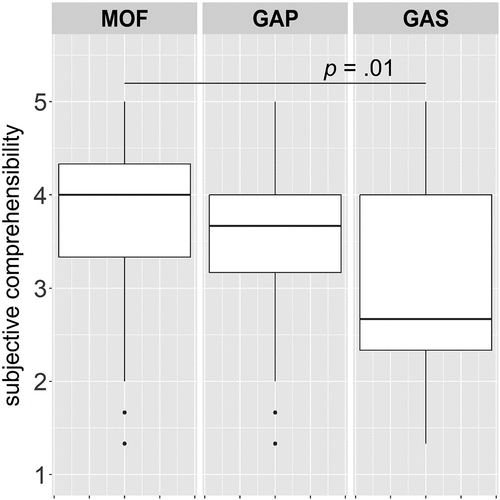
Figure 7. Box plots for word difficulty by experimental condition in Experiment 2.
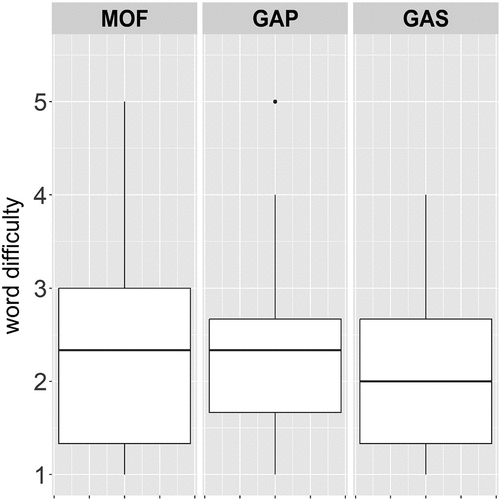
Figure 8. Box plots for sentence difficulty by experimental condition in Experiment 2.
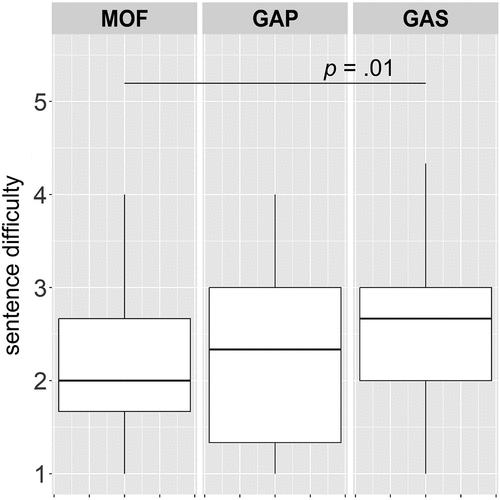
Figure 9. Box plots for aesthetic appeal by experimental condition in Experiment 2.
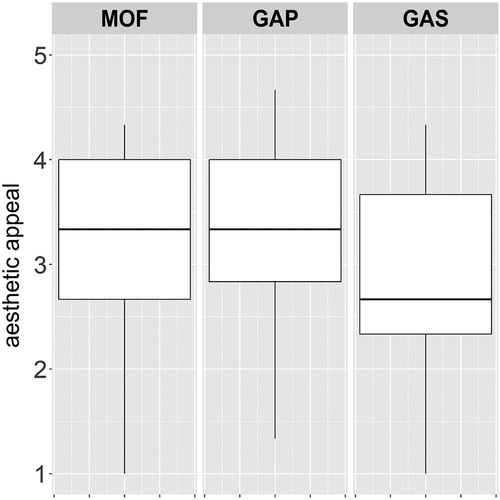
Figure 10. Box plots for time on task by experimental condition in Experiment 2.

Figure 11. Box plots for comprehension by experimental condition in Experiment 2.
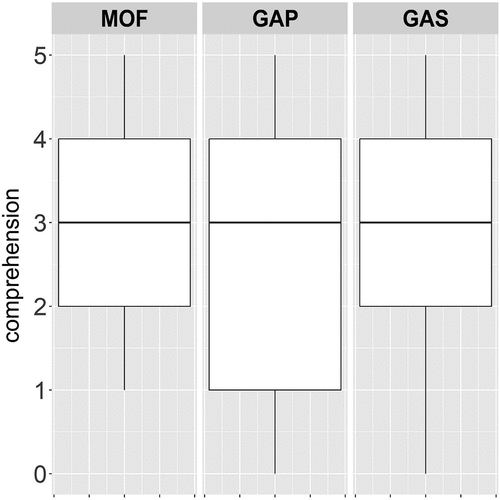
When the 10 individuals who did not have at least a Fachabitur (specialized high school diploma) were excluded from the analysis, the results remained the same, but the effect on sentence difficulty was not significant at p = .06, possibly due to the lower power.
A total of seven people responded to the open-ended questions at the end of the experiment and commented on the study or the text. Of these, three individuals in the condition with the singular gender asterisk indicated that they found this type of gender-fair language distracting, but none in the condition with the plural gender asterisk. Others stated, for example, that the questions were partially redundant.
Discussion
Overall, the plural gender asterisk did not affect any of the criteria examined in this experiment. This aligns with the results of Friedrich et al. (Citation2021) but contradicts the results of Experiment 1. The gender asterisk in the singular form impaired comprehensibility and sentence difficulty but did not affect word difficulty or aesthetic appeal. Thus, all four available experiments show an impairment of comprehensibility by the gender asterisk in its singular form, while no impairment of word difficulty was observed in any of them (cf., Friedrich et al., Citation2021). Overall, results were mixed for sentence difficulty and aesthetic appeal. As in Experiment 1, there were no effects on task completion time. Furthermore, there was no effect on comprehension. However, the comprehension test showed an unsatisfactory reliability. This test comprised five questions, each involving a game situation to which knowledge from the sport’s description should be applied, primarily measuring local coherence. While a pretest indicated sufficient internal consistency with Ω = .64., it is possible that readers understood the individual rules but not the game as a whole. The validity of the test was supported by its correlations with the comprehensibility scales (see ; cf., Friedrich, Citation2017). Therefore, this test needs to be revised in future studies.
General discussion
This paper investigated the influence of the gender asterisk as a special form of gender-fair language on the comprehensibility of texts. Two experiments were conducted for this purpose. Both revealed impaired comprehensibility by the gender asterisk in its singular form. However, neither experiment showed any effect of the gender asterisk on word difficulty or task completion time, neither in its singular nor plural form. Experiment 1 further demonstrated a reduction in subjective comprehensibility and the aesthetic appeal of texts due to the gender asterisk for both its plural and singular form, although it did not affect sentence difficulty. The effects of the gender asterisk in its plural form on subjective comprehensibility and aesthetic appeal were no longer statistically significant when certain less experienced users of German were excluded, though, possibly due to the lower statistical power. Experiment 2 could not replicate the effects of the gender asterisk in its plural form, but showed decreased comprehensibility and sentence difficulty in its singular form. Aesthetic appeal was not impacted by the gender asterisk in its singular form.
Together with the experiments by Friedrich et al. (Citation2021) and Friedrich, Hagenberg, & Heise (Citation2022), there are a total of five experiments examining the comprehensibility of the gender asterisk. Four of these experiments examined the gender asterisk in its singular form, while three examined it in its plural form. The experiments consistently demonstrated impaired comprehensibility by the gender asterisk in its singular form, with no observed impact on word difficulty by the gender asterisk. Three of the four available experiments showed impaired sentence difficulty due to the gender asterisk in its singular form, while two showed a decline in aesthetic appeal (cp. Friedrich et al., Citation2021; Friedrich, Hagenberg, & Heise, Citation2022). Only one of the three experiments showed a decrease in comprehensibility and aesthetic appeal due to the gender asterisk in its plural form (cp. Friedrich et al., Citation2021). Why this effect was observed in one experiment but not in the other is puzzling. Approximately 5.6% of the text passages in Experiment 1 were manipulated, compared to 8.7% in Experiment 2 of the present study and 4.1% in Experiment 1 of Friedrich et al. (Citation2021). The text in Experiment 1 was longer and more comprehensible than in the other two experiments. It is conceivable that the overall simplicity of the text rendered the changes due to gender-fair language more noticeable (see ). However, this hypothesis must be tested in future studies.
This study has several limitations. Both experiments presented were designed to detect medium effects, potentially leading to an underestimation of the impairments in comprehensibility caused by gender-fair language. This raises several questions: What degree of impairment of comprehensibility due to gender-fair language would be considered relevant? What degree of impairment of comprehensibility due to gender-fair language would be acceptable to achieve the goal of making women, members of other genders, their achievements, and interests more visible, thereby fostering greater equality? These important questions lie outside the scope of the issues addressed in this study.
Another limitation of this study is the selection of texts. In both experiments, expository texts commonly encountered in everyday life were used, containing many personal identifiers to allow for substantive manipulations. Texts on different topics were used to increase the generalizability of the results. The subjective comprehensibility values indicate very low to medium complexity of the texts (see ). However, these studies were not systematically selected. In future studies, it would be desirable to use texts that are systematically representative of different text types.
The present experiments are among the few studies on the topic that measured the time readers spent engaging with the texts. However, in both experiments task duration was assessed via self-reports. It would be advantageous for future studies to employ more accurate, nonreactive measurement methods. For example, readers could be instructed to press a key when they begin reading and again when they finish, allowing for the calculation of the duration in between.
The experiments were conducted on Germans, the majority of whom possessed at least a specialized high school diploma. Compared to people with other school-leaving qualifications, this group exhibits the highest reading competence in Germany (Rammstedt, Citation2013). Similar to most previous studies on this topic, this study focused primarily on individuals with a high level of reading competence. It is questionable whether the results of the present experiments can be generalized to people with lower reading competencies. Therefore, it is advisable to conduct studies investigating the impact of gender-fair language on comprehensibility among such groups, especially children and people learning the language.
Only three individuals who identified with a gender outside the male-female dichotomy participated in the experiments. Future studies should explore how these individuals respond to gender-fair forms intended to make nonbinary genders explicitly visible. In light of self-categorization theory, self-determination theory, and previous studies regarding the effects of gender-fair language on women, we expect that individuals who identify as nonbinary would feel more acknowledged and valued by gender-fair language designed to render their gender typographically visible. Consequently, they might exhibit higher levels of intrinsic motivation, commitment, and self-efficacy.
In both experiments, masculine-only forms were systematically replaced with phrases containing gender asterisks. However, this did not correspond to the recommended procedure. Instead, gender-fair forms should be selected based on linguistic intuition. The chosen procedure was applied to investigate the maximal effects. If gender-fair forms are selected based on linguistic intuition, the effects would likely be smaller than those observed in the present study.
Furthermore, the present experiments used texts in which between 5% and 15% of the content was manipulated. A study examining texts by the Deutsche Presse-Agentur (DPA, German Press Agency) suggests that in a typical German text, only approximately 1% of all words need to be adapted to achieve gender-fair writing (Müller-Spitzer, Citation2022). Therefore, in practice, the effects are likely to be predominantly smaller than those found in this study. Future studies should also investigate the relationship between the number of gender-fair passages and comprehensibility. Is it a linear relationship, or does the relationship perhaps follow a power function?
Overall, future studies should examine the influence of text length and the number of manipulated passages. The frequency with which a stimulus is encountered can impact its processing speed and evaluation (Reber & Greifeneder, Citation2017). Longer texts with more instances of gender-fair language may lead readers to become more accustomed to such phrases, potentially resulting in more positive evaluations overall. For instance, Gygax and Gesto (Citation2007) showed that reading time for gender-fair phrases in the first passages of the text was longer than that for masculine-only forms, while the reading times for gender-fair forms after the first passages corresponded to those of masculine-only forms. Hence, future studies should specifically examine the effects of text length, number of gender-fair passages, and proportion of gender-fair passages on comprehensibility, as well as complexity of the base text on comprehensibility, reading times, and comprehension.
A strength of this study’s experiments lies in their systematic comparison of the influence of a specific form of gender-fair language in both its singular and plural forms. To date, almost all previous studies have examined only less complex plural forms of gender-fair language. However, the present experiments showed the different effects of these forms. Future studies should compare the plural forms of gender-fair language with their singular forms.
The few available experiments on the effects of the gender asterisk indicate that it represents women and members of other genders more inclusively than masculine-only forms, but impairs comprehensibility in its singular form. This suggests that avoiding the use of the gender asterisk in its singular form, at least with the article “der*die” (the*the) may be prudent. Future studies should investigate the effect of the gender asterisk in the singular form when the article is abbreviated as “d.” (t.). Thus far, it seems preferable to use other forms of gender-fair language for singular forms, such as neutral forms, substantiated participles, or the direct address using “you.”
Disclosure statement
No potential conflict of interest was reported by the author(s).
References
- Bem, S. L., & Bem, D. J. (1973). Does sex-biased job advertising “aid and abet” sex discrimination? Journal of Applied Social Psychology, 3(1), 6–18. https://doi.org/10.1111/j.1559-1816.1973.tb01290.x
- Blake, C., & Klimmt, C. (2010). Geschlechtergerechte Formulierungen in Nachrichtentexten [Gender-fair references in news stories]. Publizistik, 55(3), 289–304. https://doi.org/10.1007/s11616-010-0093-2
- Blaubergs, M. S. (1980). An analysis of classic arguments against changing sexist language. Women’s Studies International Quarterly, 3(2–3), 125–147. https://doi.org/10.1111/j.1471-6402.1981.tb01101.x
- Braun, F., Oelkers, S., Rogalski, K., Bosak, J., & Sczesny, S. (2007). “Aus Gründen der Verständlichkeit … ”: Der Einfluss maskuliner und alternativer Personenbezeichnungen auf die kognitive Verarbeitung von Texten [“For reasons of comprehensibility … ”: How masculine generics and alternative forms affect the cognitive processing of a text]. Psychologische Rundschau, 58(3), 183–189. https://doi.org/10.1026/0033-3042.58.3.183
- Braun, F., Sczesny, S., & Stahlberg, D. (2005). Cognitive effects of masculine generics in German: An overview of empirical findings. Communications, 30(1), 1–21. https://doi.org/10.1515/comm.2005.30.1.1
- Collins-Thompson, K. (2014). Computational assessment of text readability: A survey of current and future research. International Journal of Applied Linguistics, 165(2), 97–135.
- Cromley, J. G., & Azevedo, R. (2007). Testing and refining the direct and inferential mediation model of reading comprehension. Journal of Educational Psychology, 99(2), 311–325. https://doi.org/10.1037/0022-0663.99.2.311
- Crossley, S. A., Greenfield, J., & McNamara, D. S. (2008). Assessing text readability using psycholinguistic indices. TESOL Quarterly, 42(3), 475–493. https://doi.org/10.1002/j.1545-7249.2008.tb00142.x
- DeFranza, D., Mishra, H., & Mishra, A. (2020). How language shapes prejudice against women: An examination across 45 world languages. Journal of Personality and Social Psychology, 119(1), 7–22. https://doi.org/10.1037/pspa0000188
- Diewald, G., & Steinhauer, A. (2020). Handbuch geschlechtergerechte Sprache – Wie Sie angemessen und verständlich gendern [Handbook on gender-fair language – How to use it appropriately and comprehensibly]. Duden.
- Esaulova, Y., & von Stockhausen, L. (2015). Cross-linguistic evidence for gender as a prominence feature. Frontiers in Psychology, 6(1356). https://doi.org/10.3389/fpsyg.2015.01356
- Friedrich, M. C. G. (2017). Textverständlichkeit und ihre Messung [ Text comprehensibility and its measurement]. Waxmann.
- Friedrich, M. C. G., Drößler, V., Oberlehberg, N., & Heise, E. (2021). The influence of the gender asterisk (“Gendersternchen”) on comprehensibility and interest. Frontiers in Psychology, 12(5934). https://doi.org/10.3389/fpsyg.2021.760062
- Friedrich, M. C. G., Hagenberg, K., & Heise, E. (2022, July). Does the gender asterisk (“Gendersternchen”) as a special form of gender-fair language impair comprehensibility? [Paper presentation]. 32nd Meeting of the Society for Text and Discourse (ST&D), online.
- Friedrich, M. C. G., & Heise, E. (2019). Does the use of gender-fair language influence the comprehensibility of texts? An experiment using an authentic contract manipulating single role nouns and pronouns. Swiss Journal of Psychology, 78(1–2), 51–60. https://doi.org/10.1024/1421-0185/a000223
- Friedrich, M. C. G., & Heise, E. (2022). The influence of comprehensibility on interest and comprehension. Zeitschrift für Pädagogische Psychologie, 1–14. https://doi.org/10.1024/1010-0652/a000349
- Friedrich, M. C. G., Muselick, J., & Heise, E. (2022). Does the use of gender-fair language impair the comprehensibility of video lectures? – An experiment using an authentic video lecture manipulating role nouns in German. Psychology Learning & Teaching, 21(3), 296–309. https://doi.org/10.1177/147572572211073
- Gabriel, U., & Gygax, P. (2016). Gender and linguistic sexism. In H. Giles & A. Maass (Eds.), Advances in intergroup communication (pp. 177–192). Peter Lang.
- Gabriel, U., Gygax, P., Sarrasin, O., Garnham, A., & Oakhill, J. (2008). Au pairs are rarely male: Norms on the gender perception of role names across English, French, and German. Behavior Research Methods, 40(1), 206–212. https://doi.org/10.3758/BRM.40.1.206
- Gygax, P., & Gesto, N. (2007). Féminisation et lourder de texte [Feminisation of language and hindering reading]. Annee Psychologique, 107(2), 239–255. https://doi.org/10.4074/S0003503307002059
- Gygax, P. M., Elmiger, D., Zufferey, S., Garnham, A., Sczesny, S., von Stockhausen, L., Braun, F., & Oakhill, J. (2019). A language index of grammatical gender dimensions to study the impact of grammatical gender on the way we perceive women and men. Frontiers in Psychology, 10(1604). https://doi.org/10.3389/fpsyg.2019.01604
- Haberlandt, K. F., & Graesser, A. C. (1985). Component processes in text comprehension and some of their interactions. Journal of Experimental Psychology: General, 114(3), 357–374. https://doi.org/10.1037/0096-3445.114.3.357
- Heise, E. (2000). Sind Frauen mitgemeint? Eine empirische Untersuchung zum Verständnis des generischen Maskulinums und seiner Alternativen [Are women included? An empirical study on the understanding of the generic masculine and its alternatives]. Sprache & Kognition, 19(1/2), 3–13. https://doi.org/10.1024//0253-4533.19.12.3
- Horvath, L. K., & Sczesny, S. (2015). Reducing women’s lack of fit with leadership positions? Effects of the wording of job advertisements. European Journal of Work and Organizational Psychology, 25(2), 316–328.
- Kintsch, W. (1998). Comprehension – A paradigm for cognition. Cambridge University Press.
- Kintsch, W., & van Dijk, T. A. (1978). Toward a new model of text comprehension and production. Psychological Review, 85(5), 363–394. https://doi.org/10.1037/0033-295x.85.5.363
- Klimmt, C., Pompetzki, V., & Blake, C. (2008). Geschlechterrepräsentation in Nachrichtentexten [Representation of gender in news texts]. Medien & Kommunikationswissenschaft, 56(1), 3–20. https://doi.org/10.5771/1615-634x-2008-1-3
- Körner, A., Abraham, B., Rummer, R., & Strack, F. (2022). Gender representations elicited by the gender star form. Journal of Language and Social Psychology, 41(5), 553–571. https://doi.org/10.1177/0261927X221080181
- Kricheli-Katz, T., & Regev, T. (2021). The effect of language on performance: Do gendered languages fail women in maths? Science of Learning, 6(9). https://doi.org/10.1038/s41539-021-00087-7
- Krome, S. (2021). Gendern zwischen Sprachpolitik, orthografischer Norm, Sprach- und Schreibgebrauch [Gendering between language policy, orthographic norm, language and spelling usage]. Sprachreport, 37(2), 22–29. https://doi.org/10.14618/sr-2-2021-krom
- Langer, I., Schulz von Thun, F., & Tausch, R. (1974). Sich verständlich ausdrücken [Expressing yourself comprehensibly]. E. Reinhardt.
- Lindqvist, A., Renström, E. A., & Gustafsson Sendén, M. (2019). Reducing a male bias in language? Establishing the efficiency of three different gender-rair language strategies. Sex Roles, 81(1–2), 109–117. https://doi.org/10.1007/s11199-018-0974-9
- McNamara, D. S., Graesser, A. C., McCarthy, P. M., & Cai, Z. (2014). Automated evaluation of text and discourse with coh-metrix. Cambridge University Press.
- Misersky, J., Majid, A., & Snijders, T. M. (2019). Grammatical gender in German influences how role-nouns are interpreted: Evidence from ERPs. Discourse Processes, 56(8), 643–654. https://doi.org/10.1080/0163853X.2018.1541382
- Müller-Spitzer, C. (2022, February). Wie häufig ist das sogenannte generische Maskulinum? Eine quantitativ-qualitative Auswertung von DPA-Meldungen [How frequent is the so-called generic masculine? A quantitative-qualitative evaluation of GPA reports] [Paper presentation]. Meeting for the launch of the DFG project “Genderbezogene Praktiken bei Personenreferenzen: Diskurs, Grammatik, Kognition”, online.
- Payr, F. (2022a). Aufruf: Wissenschaftler kritisieren Genderpraxis des ÖRR [Appeal: Scientists criticize gender practice of the ÖRR]. https://www.linguistik-vs-gendern.de/
- Payr, F. (2022b). Von Menschen und Mensch*innen - 20 gute Gründe mit dem Gendern aufzuhören [Of men and wo*men - 20 good reasons to stop gendering]. Springer. https://doi.org/10.1007/978-3-658-36675-9
- Pöschko, H., & Prieler, V. (2018). Zur Verständlichkeit und Lesbarkeit von geschlechtergerecht formulierten Schulbuchtexten [On the comprehensibility and readability of gender-fair schoolbook texts]. Zeitschrift für Bildungsforschung, 8(1), 5–18. https://doi.org/10.1007/s35834-017-0195-2
- Prewitt-Freilino, J. L., Caswell, T. A., & Laakso, E. K. (2012). The gendering of language: A comparison of gender equality in countries with gendered, natural gender, and genderless languages. Sex Roles, 66(3–4), 268–281. https://doi.org/10.1007/s11199-011-0083-5
- R Core Team. (2021). R: A language and environment for statistical computing. R Foundation for Statistical Computing. http://www.Rproject.org/
- Rammstedt, B. ( Hrsg.). (2013). Grundlegende Kompetenzen Erwachsener im internationalen Vergleich: Ergebnisse von PIAAC 2012 [Basic competencies of adults in international comparison: Results from PIAAC 2012]. Waxmann. https://nbn-resolving.org/urn:nbn:de:0168-ssoar-360687
- Reber, R., & Greifeneder, R. (2017). Processing fluency in education: How metacognitive feelings shape learning, belief formation, and affect. Educational Psychologist, 52(2), 84–103. https://doi.org/10.1080/00461520.2016.1258173
- Rothmund, J., & Christmann, U. (2002). Auf der Suche nach einem geschlechtergerechten Sprachgebrauch [In search of a gender-fair use of language]. Muttersprache, 112(2), 115–135.
- Sato, S., Gabriel, U., & Gygax, P. M. (2016). Altering male-dominant representations: A study on nominalized adjectives and participles in first and second language German. Journal of Language and Social Psychology, 35(6), 667–685. https://doi.org/10.1177/0261927X15625442
- Sato, S., Gygax, P. M., & Gabriel, U. (2016). Gauging the impact of gender grammaticization in different languages: Application of a linguistic-visual paradigm. Frontiers in Psychology, 7, 140. https://doi.org/10.3389/fpsyg.2016.00140
- Saul, J., & Diaz-Leon, E. (2018). Feminist philosophy of language. In E. N. Zalta (Ed.), The stanford encyclopedia of philosophy. Stanford University Metaphysics Research Lab. https://plato.stanford.edu/archives/fall2018/entries/feminism-language/
- Sczesny, S., Moser, F., & Wood, W. (2015). Beyond sexist beliefs: How do people decide to use gender-inclusive language? Personality and Social Psychology Bulletin, 41(7), 943–954. https://doi.org/10.1177/0146167215585727
- Stahlberg, D., Braun, F., Irmen, L., & Sczesny, S. (2007). Representation of the sexes in language. In K. Fiedler (Ed.), Social communication (pp. 163–187). Psychology Press.
- Steiger-Loerbroks, V., & von Stockhausen, L. (2014). Mental representations of gender-fair nouns in German legal language: An eye-movement and questionnaire-based study. Linguistische Berichte, 237, 57–80. https://doi.org/10.46771/2366077500237_4
- Stout, J. G., & Dasgupta, N. (2011). When he doesn’t mean you: Gender-exclusive language as ostracism. Personality and Social Psychology Bulletin, 36(6), 757–769. https://doi.org/10.1177/0146167211406434
- Turner, J. C., Hogg, M. A., Oakes, P. J., Reicher, S. D., & Wetherell, M. S. (1987). Rediscovering the social group. A self-categorization theory. Blackwell.
- Vergoossen, H. P., Pärnamets, P., Renström, E. A., & Sendén, M. G. (2020). Are new gender-neutral pronouns difficult to process in reading? The case of hen in Swedish. Frontiers in Psychology, 11, 574356. https://doi.org/10.3389/fpsyg.2020.574356
- Vergoossen, H. P., Renström, E. A., Lindqvist, A., & Sendén, M. G. (2020). Four dimensions of criticism against gender-fair language. Sex Roles, 83(337), 328–337. https://doi.org/10.1007/s11199-019-01108-x
- Vervecken, D., Gygax, P. M., Gabriel, U., Guillod, M., & Hannover, B. (2015). Warm-hearted businessmen, competitive housewives? Effects of gender-fair language on adolescents’ perceptions of occupations. Frontiers in Psychology, 6(1437). https://doi.org/10.3389/fpsyg.2015.01437
- Vervecken, D., & Hannover, B. (2015). Yes I can! Effects of gender-fair job descriptions on children’s perceptions of job status, job difficulty, and vocational self-efficacy. Social Psychology, 46(2), 76–92. https://doi.org/10.1027/1864-9335/a000229
- Vervecken, D., Hannover, B., & Wolter, I. (2013). Changing (s)expectations: How gender fair job descriptions impact children’s perceptions and interest regarding traditionally male occupations. Journal of Vocational Behavior, 82(3), 208–220. https://doi.org/10.1016/j.jvb.2013.01.008
- Zacharski, L., & Ferstl, E. C. (2023). Gendered representations of person referents activated by the nonbinary gender star in German: A word-picture matching task. Discourse Processes, 60(4–5), 294–319. https://doi.org/10.1080/0163853X.2023.2199531
